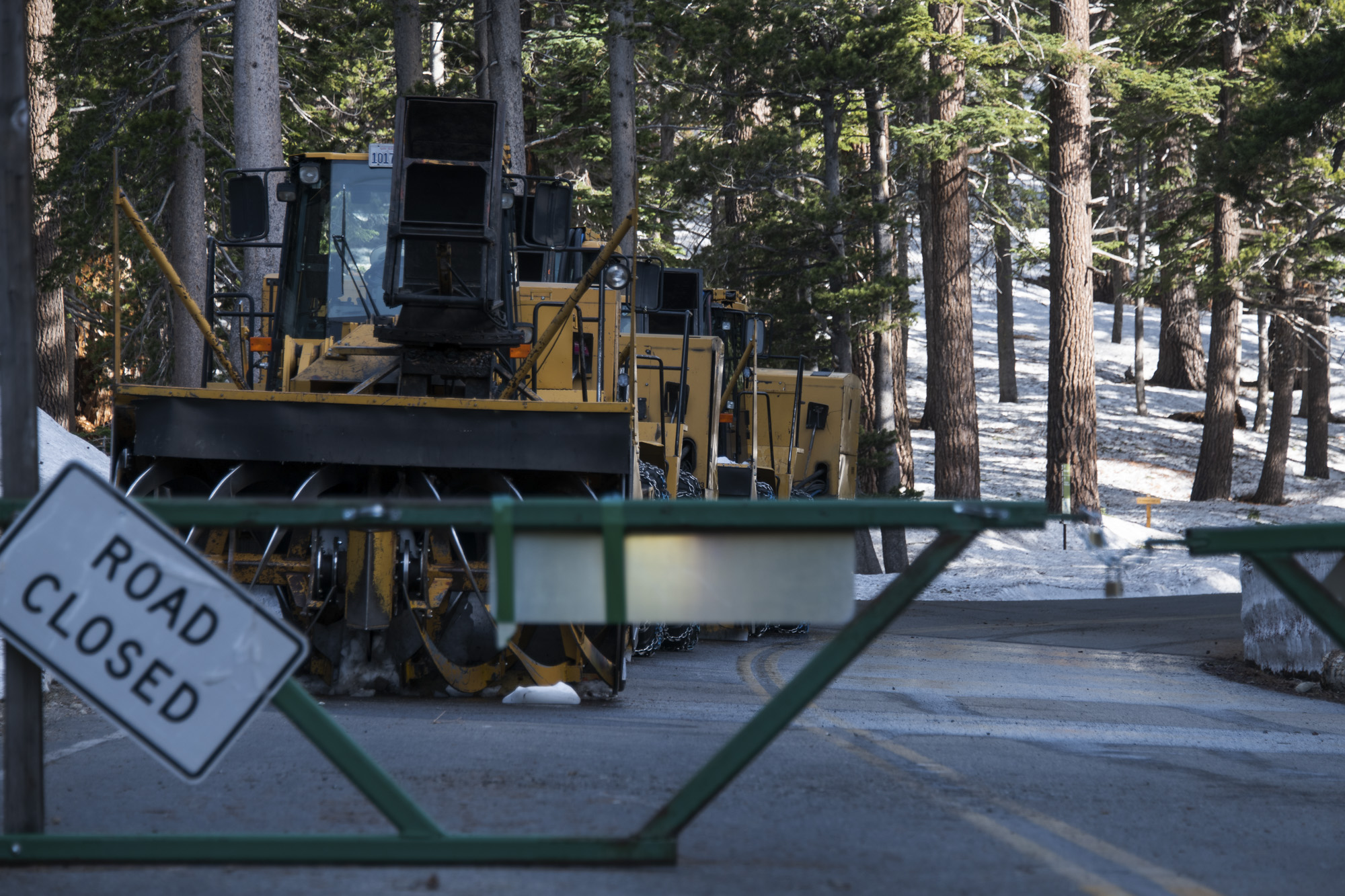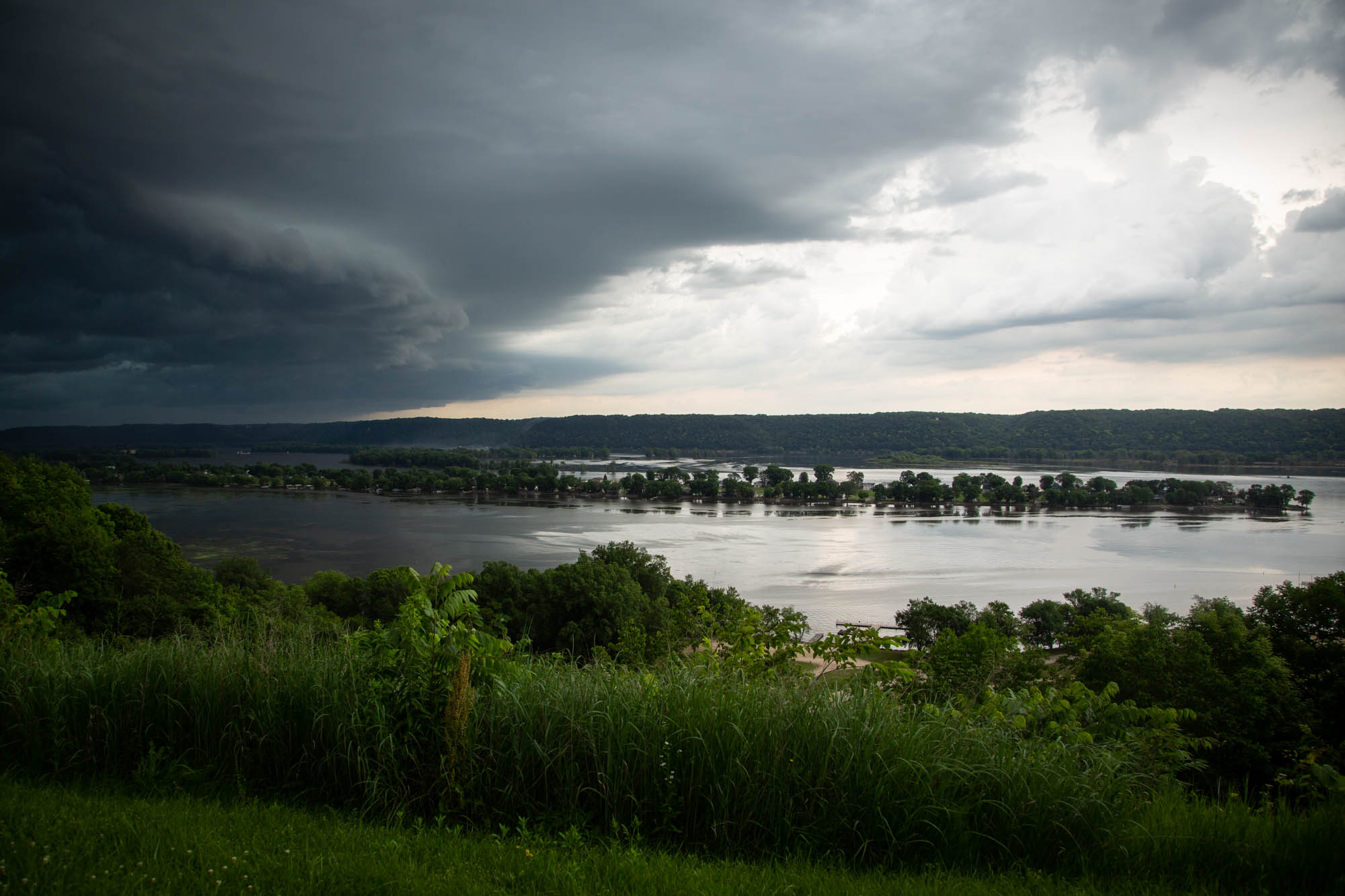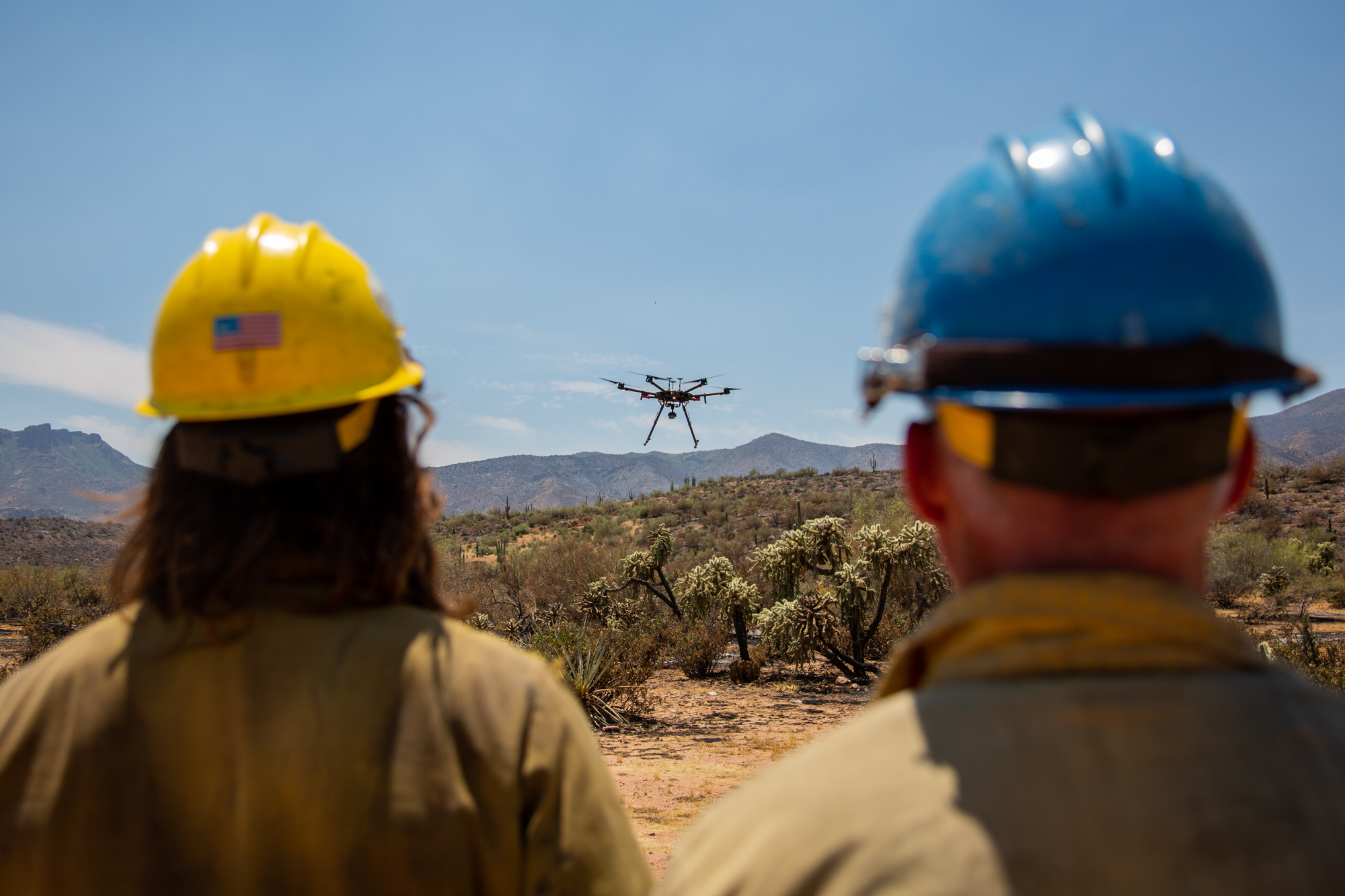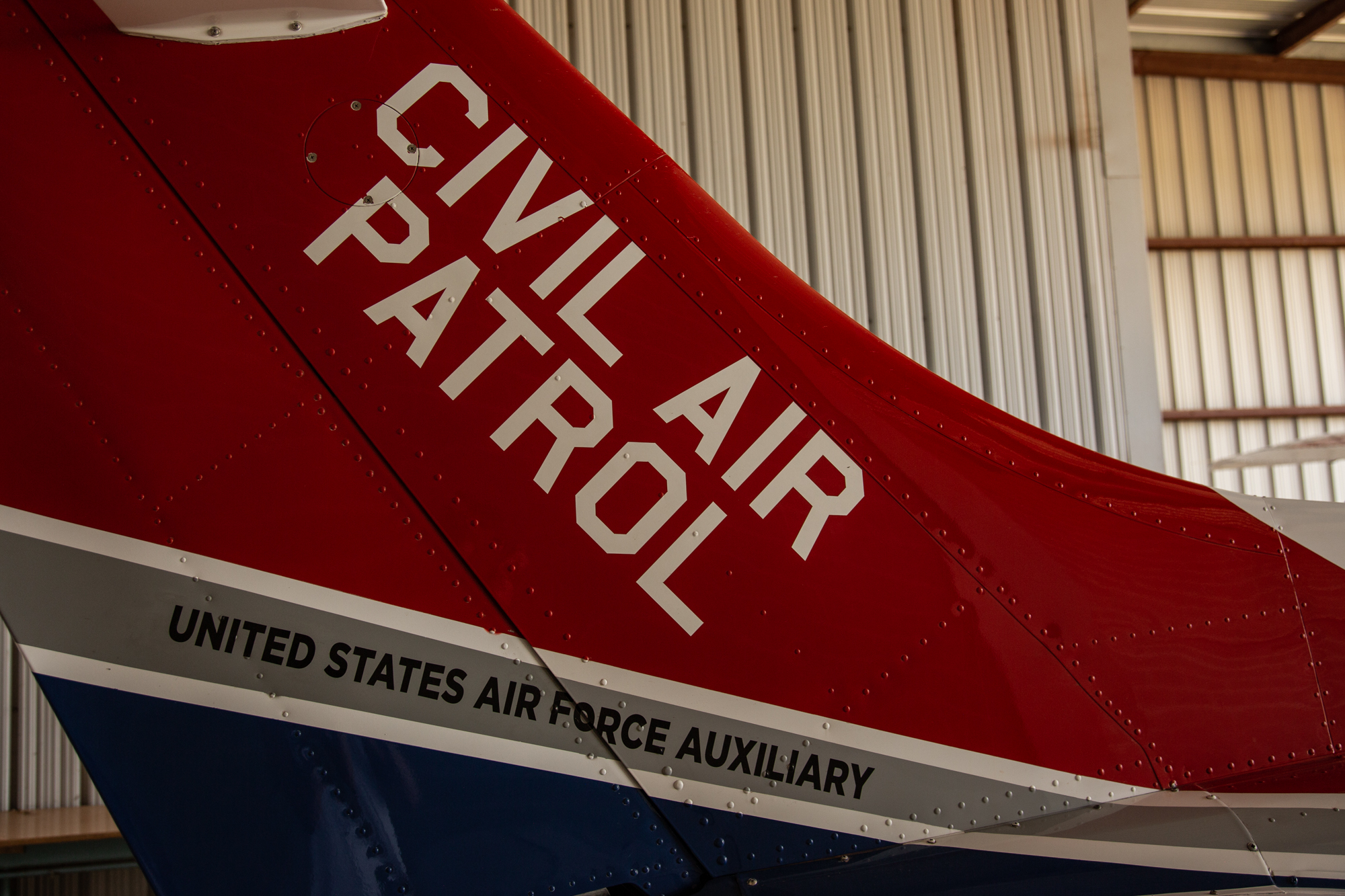With a tourism-based economy centered around Mammoth Mountain Ski Area, the resort town of Mammoth Lakes, California, relies heavily on snow to attract visitors.
“People describe it as one of those little snow globes,” said Stu Brown, the director of parks and recreation of the town that welcomes 20,000 to 30,000 guests on any given weekend throughout the year.
“It’s living in an endless winter,” he added.
Even in the middle of summer, whether it be piles on the side of the road, up on the mountain tops or at the resort, snow is visible in Mammoth Lakes year-round.
The town’s success is dependent on snow, but even Brown said too much of a good thing can turn bad.
“Everyone likes beautiful snowfall,” he said. “Unfortunately, when it gets carried away, that becomes the problem.”
Brown said snow is the community’s source of economy, it also sometimes creates major transportation problems for the four-square mile resort town located 300 miles northwest of Los Angeles in the Sierra Nevada mountains.
While most people think of police, firefighters and paramedics as first responders, in snow country, snow removal crews are first responders when emergency vehicles can’t get through to accident sites or hospitals because of snow-packed roads.
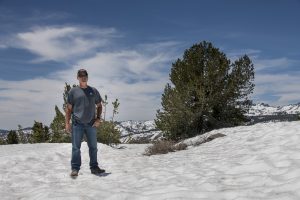
Todd Murphy, the town’s public works maintenance manager, and his crew of snow blower operators play a crucial role in assisting fire and police in moving around the snow-covered streets of Mammoth Lakes.
“I always tell people… our roads aren’t cleared to remove the berm [of snow] in front of your driveway, our roads are cleared to get first responders and emergency personnel around,” Murphy said.
While heavy snow can cause problems, it also serves as one of the community’s best lines of defense against wildfires, Brown said.
The snow helps suppress wildfires by covering smoldering brush and preventing the spread of flames.
The town has seen 55 feet of snowfall during a single winter season in recent years, making for around-the-clock snow removal at some points.
“A long winter — it’s kind of the best case scenario for California’s extreme summers these days,” said Brown. “That’s why I think everybody is kind of OK with it.”
This year, the town experienced its sixth snowiest season in the past 20 years when 41 feet fell between October and May and arrived in uncharacteristic ways.
For one, nearly half the town’s snowfall for the year came in a single month.
“207 inches in February,” said Brown. “Divide that by 28. That’s — that’s a lot of snow every day.”
And as winter looked like it may give way to spring, May brought 32 inches to the town, breaking the month’s previous record of 27.5 inches from the 2010-2011 season.
This late-season snow allowed Andrew Schimmel and Jordan Roseberg to make a trip in June from Toronto, Ontario, Canada, to snowboard in shorts and Hawaiian shirts at Mammoth Mountain Area where the idea of an endless winter will be on full display until resort officials plan to close for the season in August.
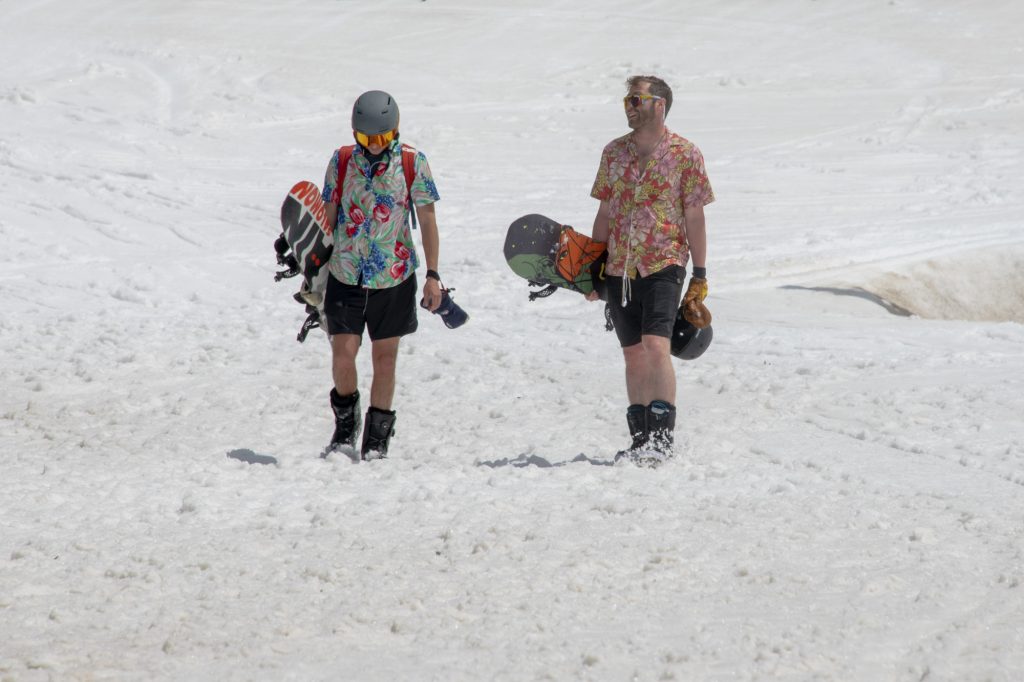
Christian Gravius is a recent graduate of St. Bonaventure University where he majored in journalism and minored in English. Gravius covered high school sports for the Olean Times Herald in New York, and worked as a marketing intern at the world’s largest YMCA in Estes Park, Colorado. Gravius covered the St. Bonaventure Bonnies in the 2018 NCAA Men’s Basketball Tournament in Dallas. Gravius won the top award in the Jim Murray Memorial Foundation competition for an essay he wrote about a former teammate’s running career before and after a life-changing accident. Gravius will pursue a master’s degree at South Dakota State University in sports and recreation administration. See his work here.
